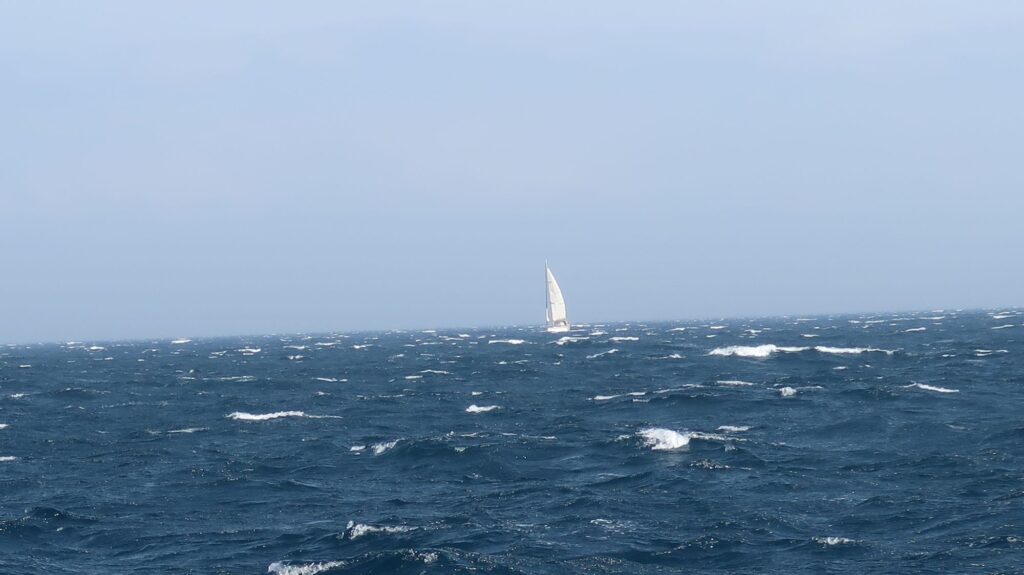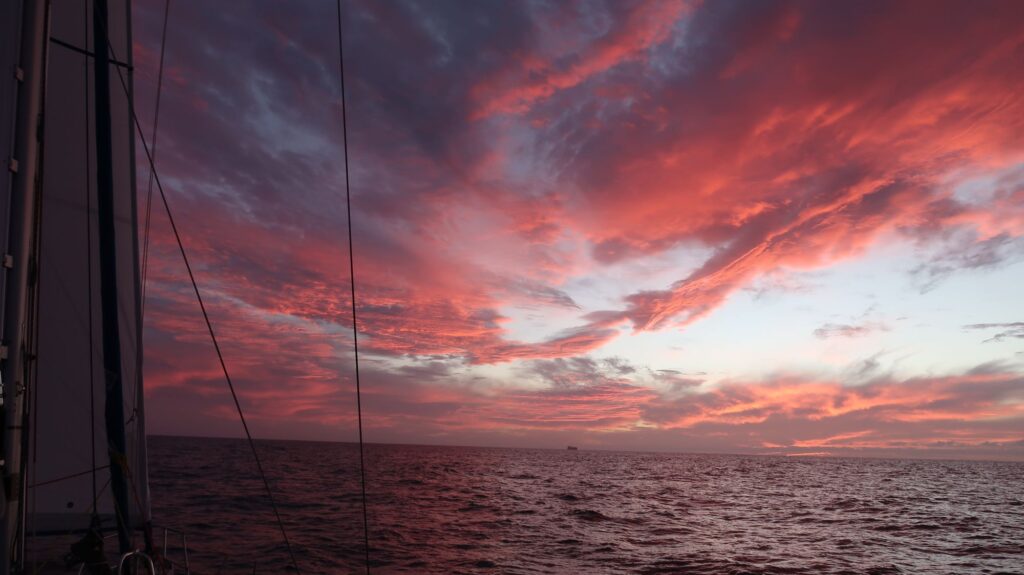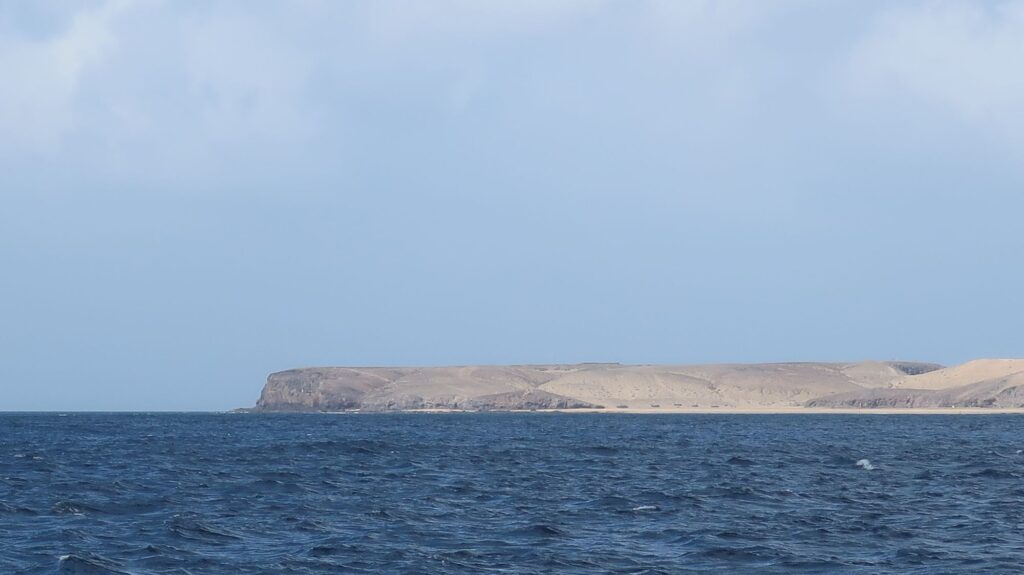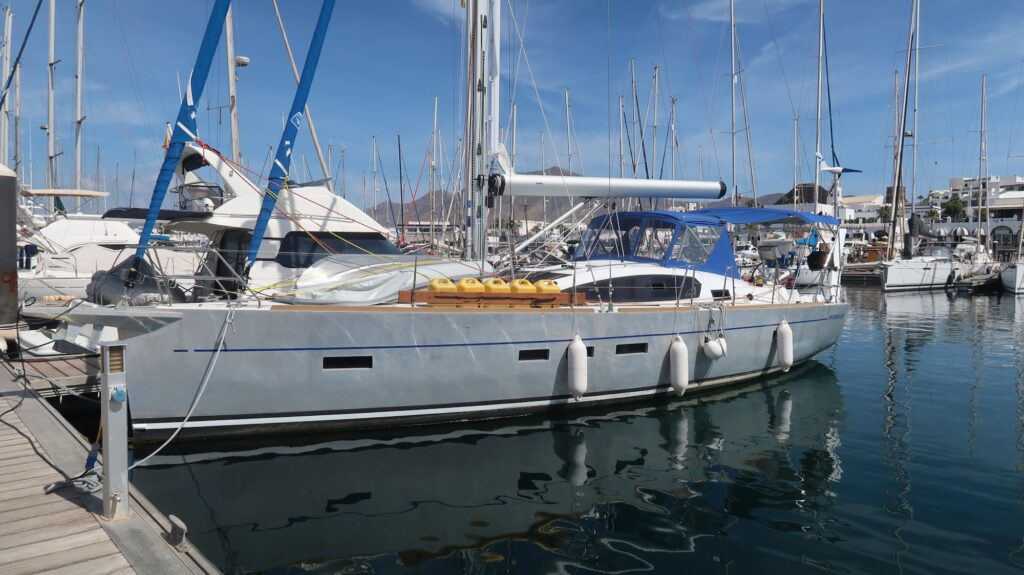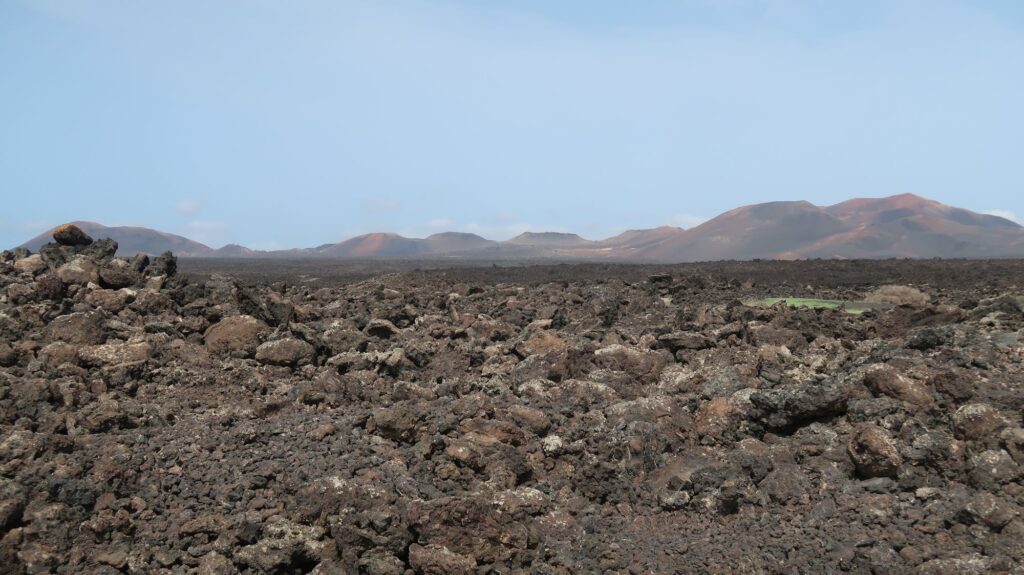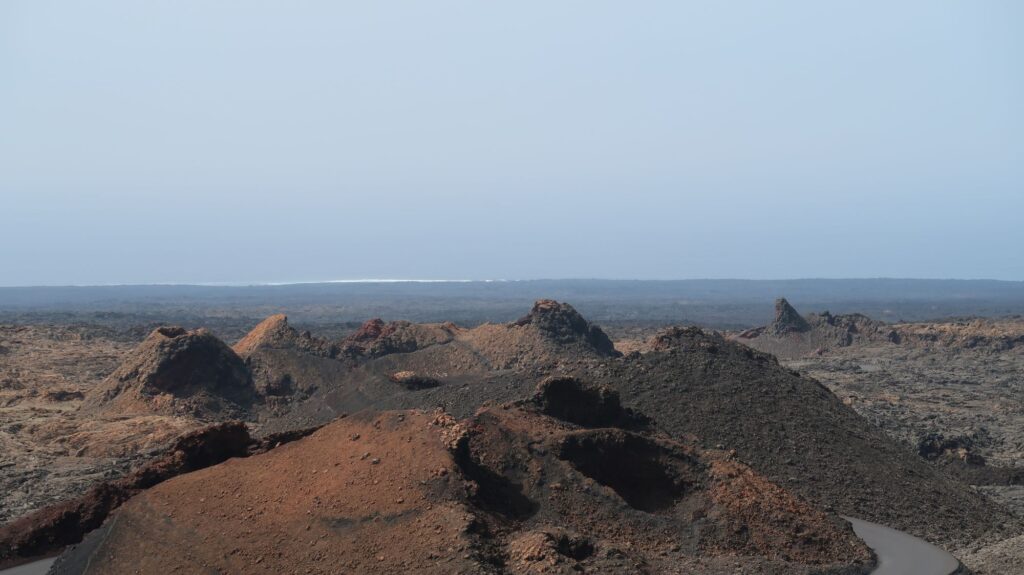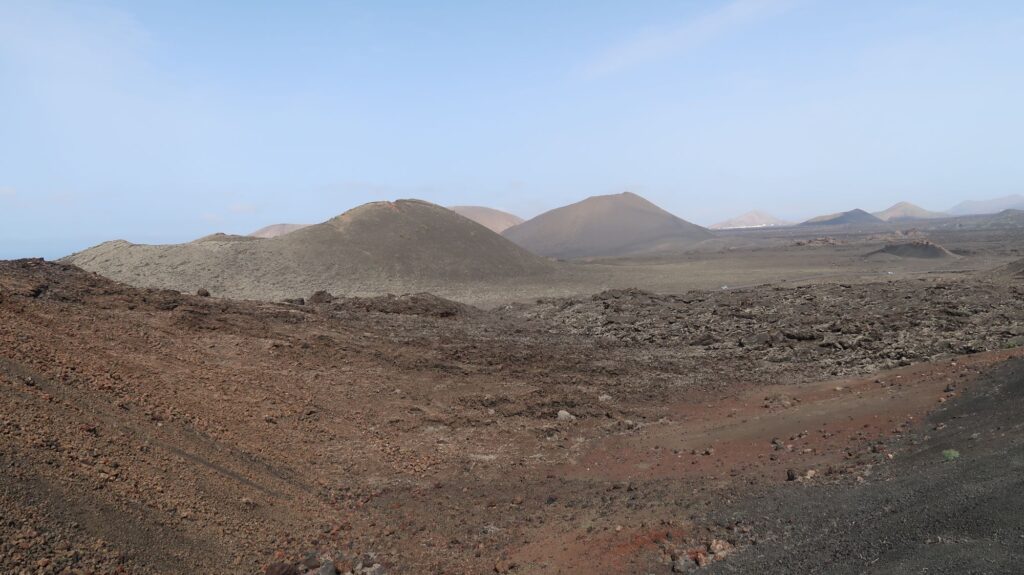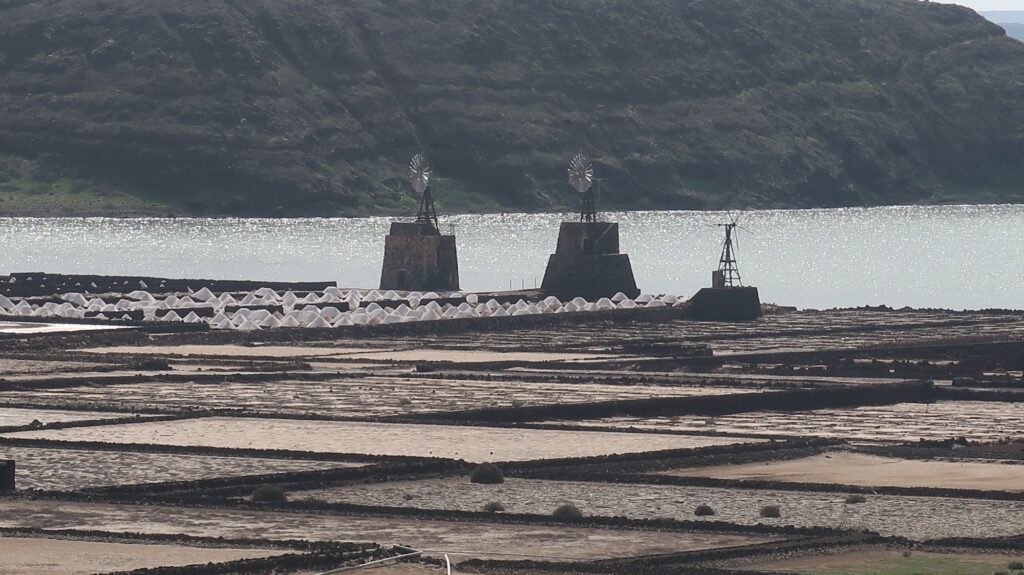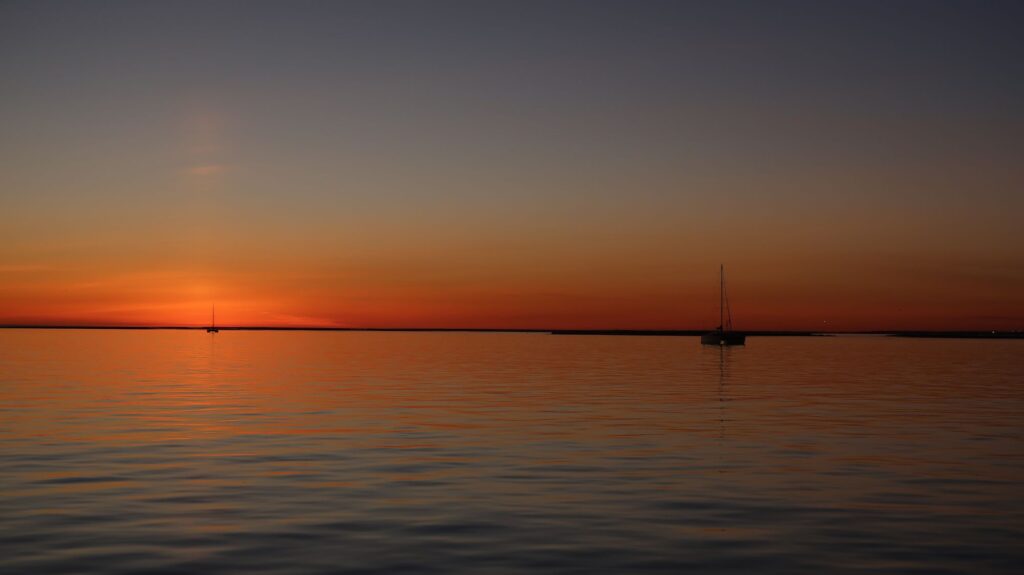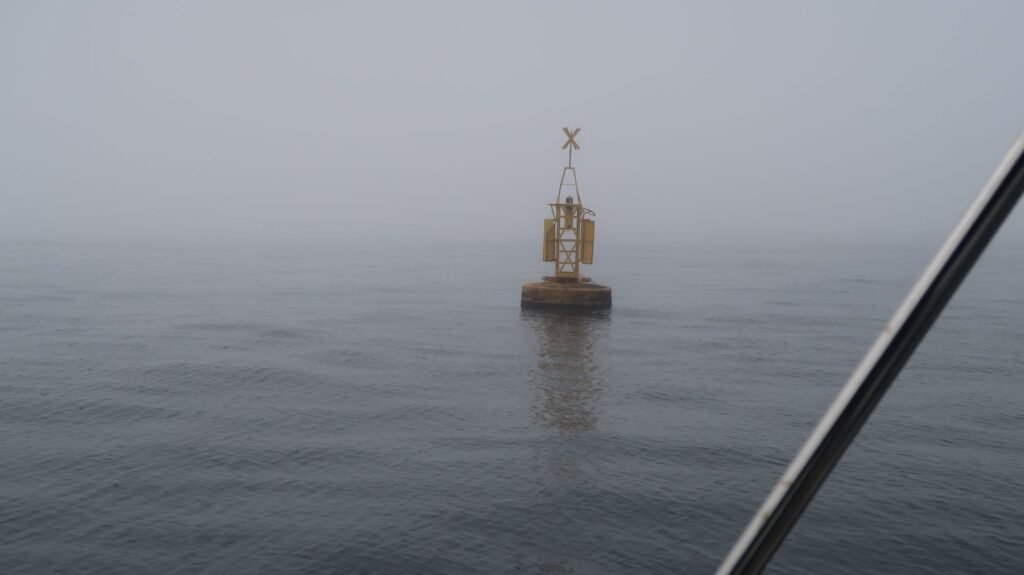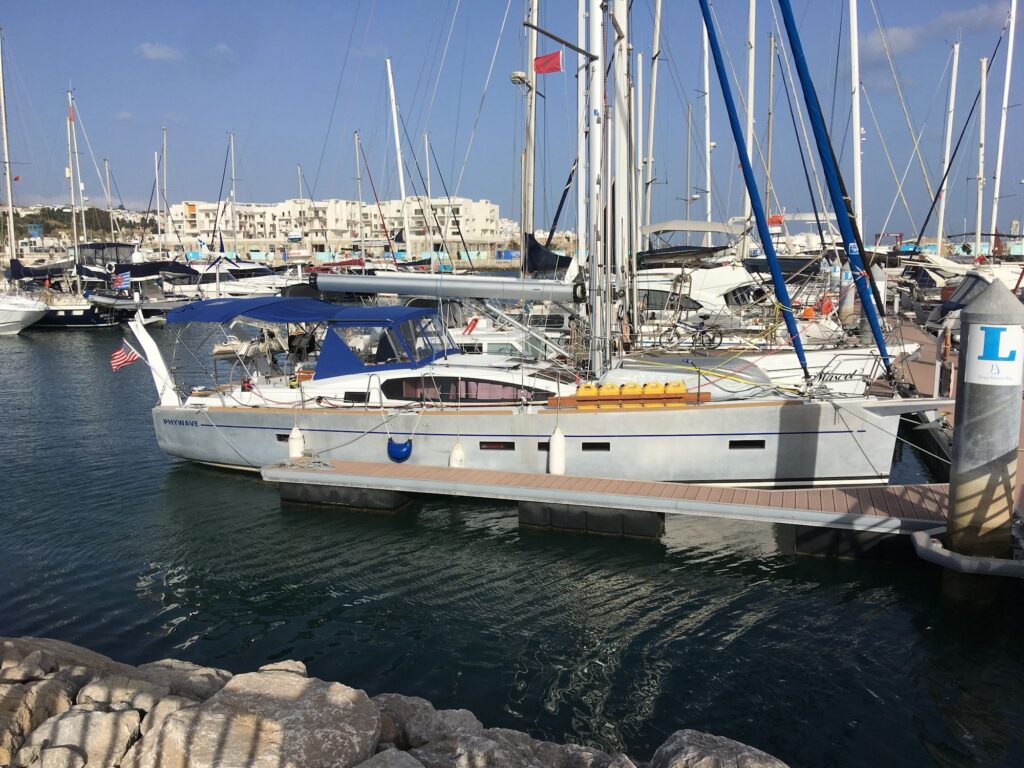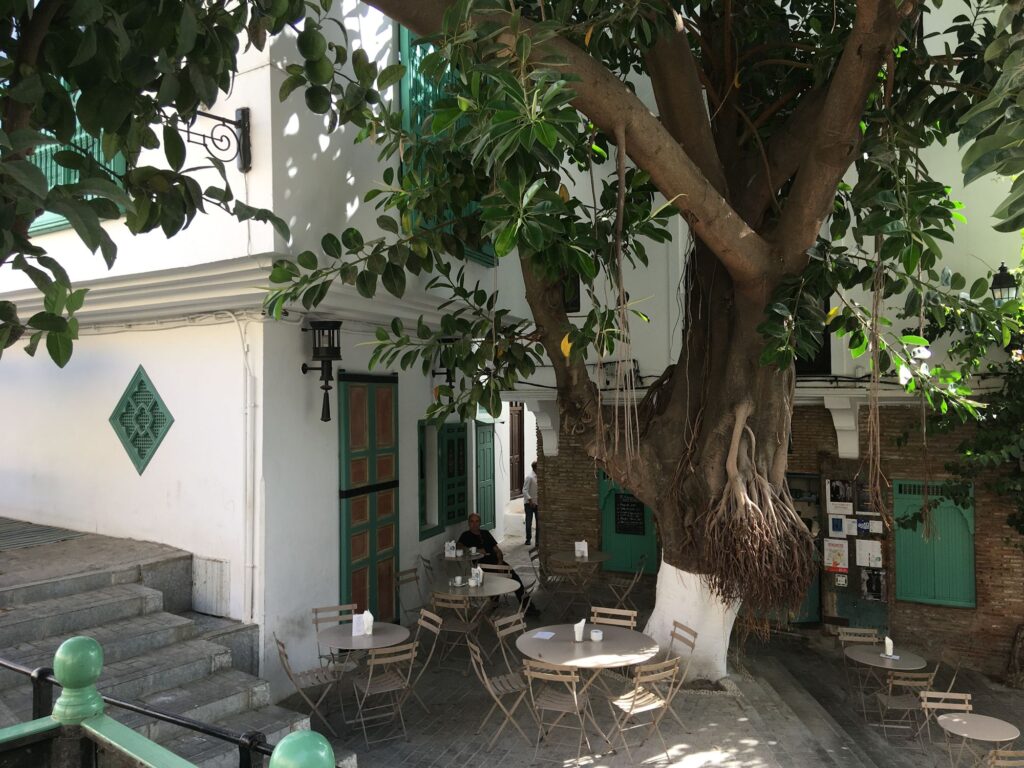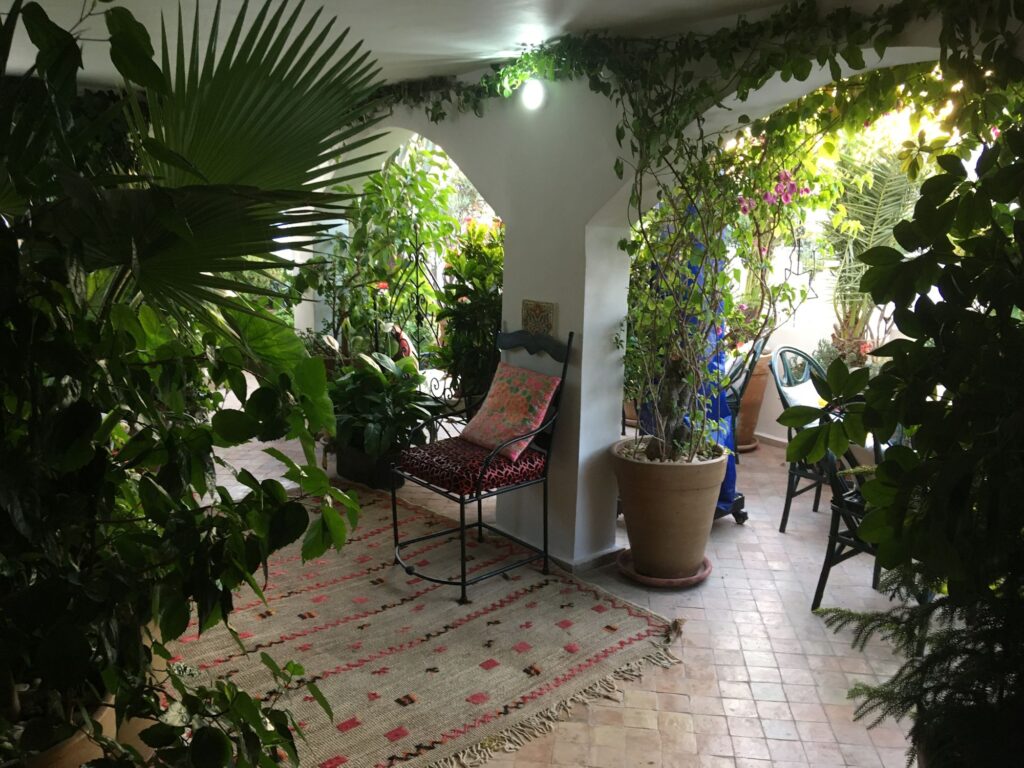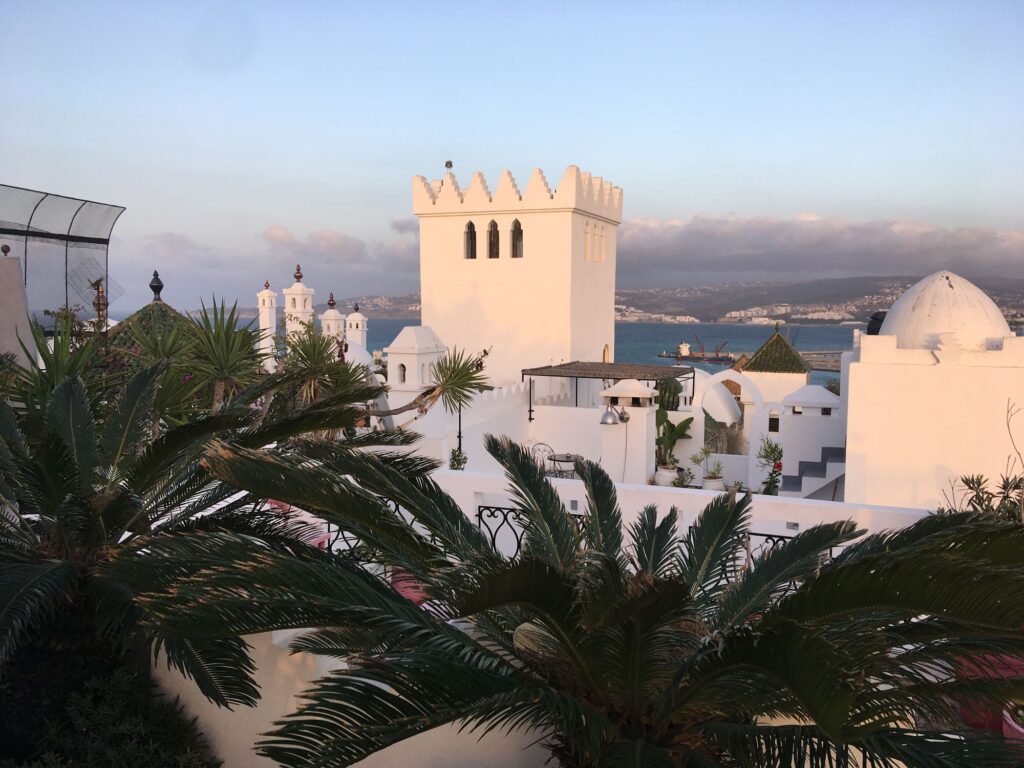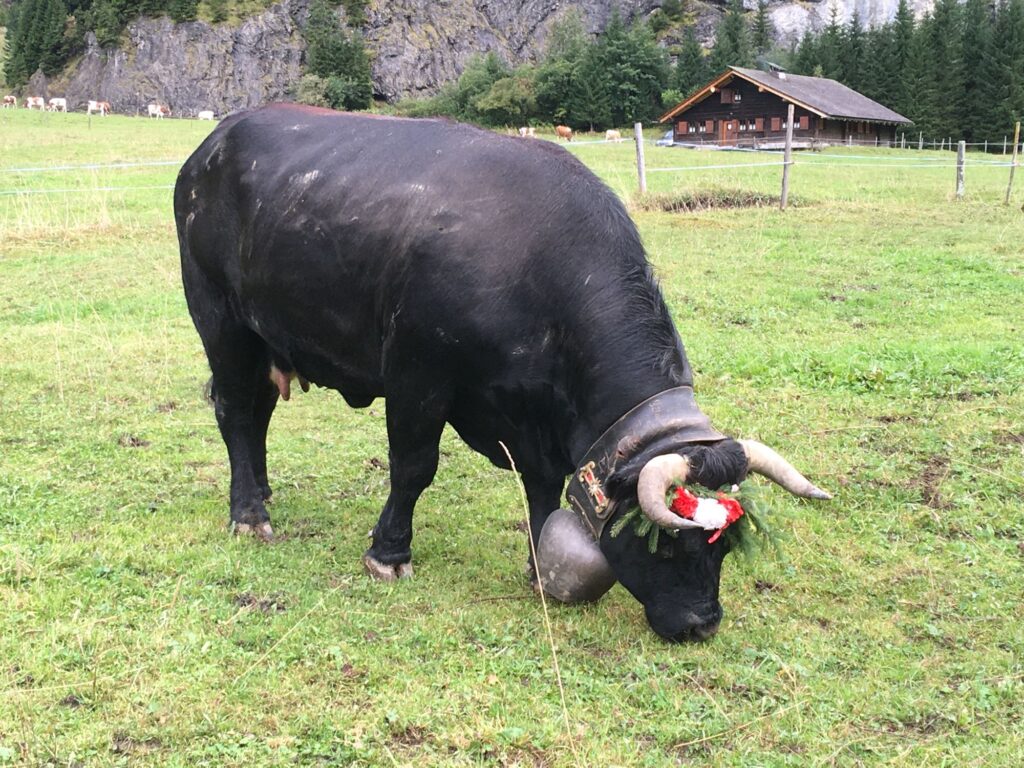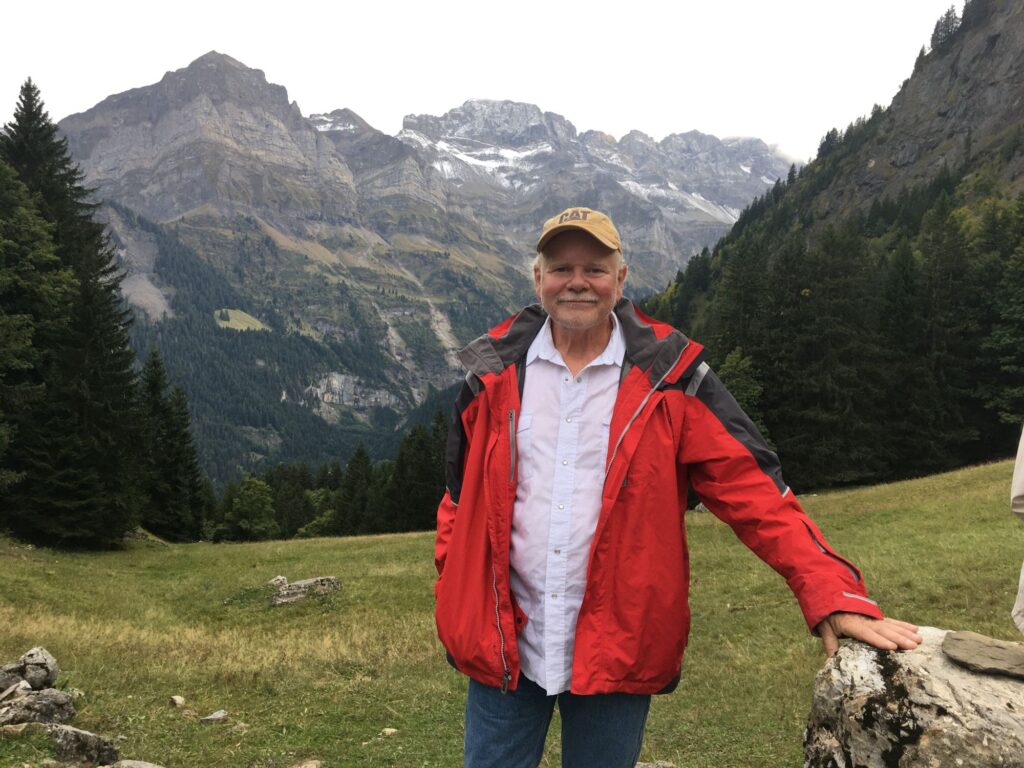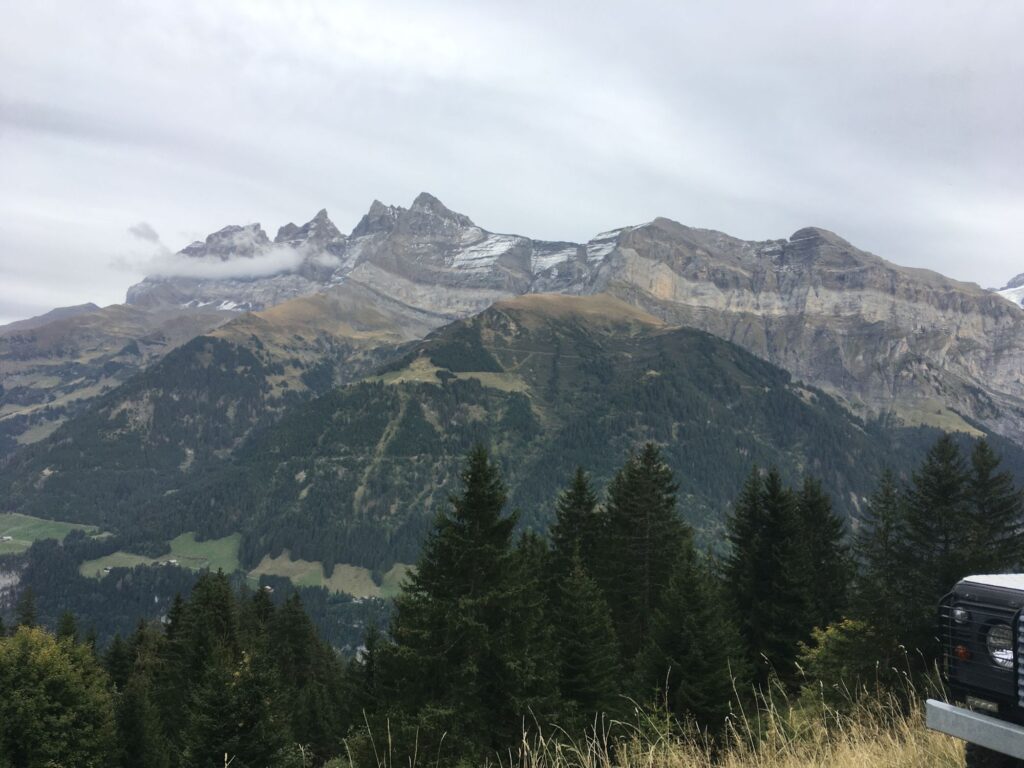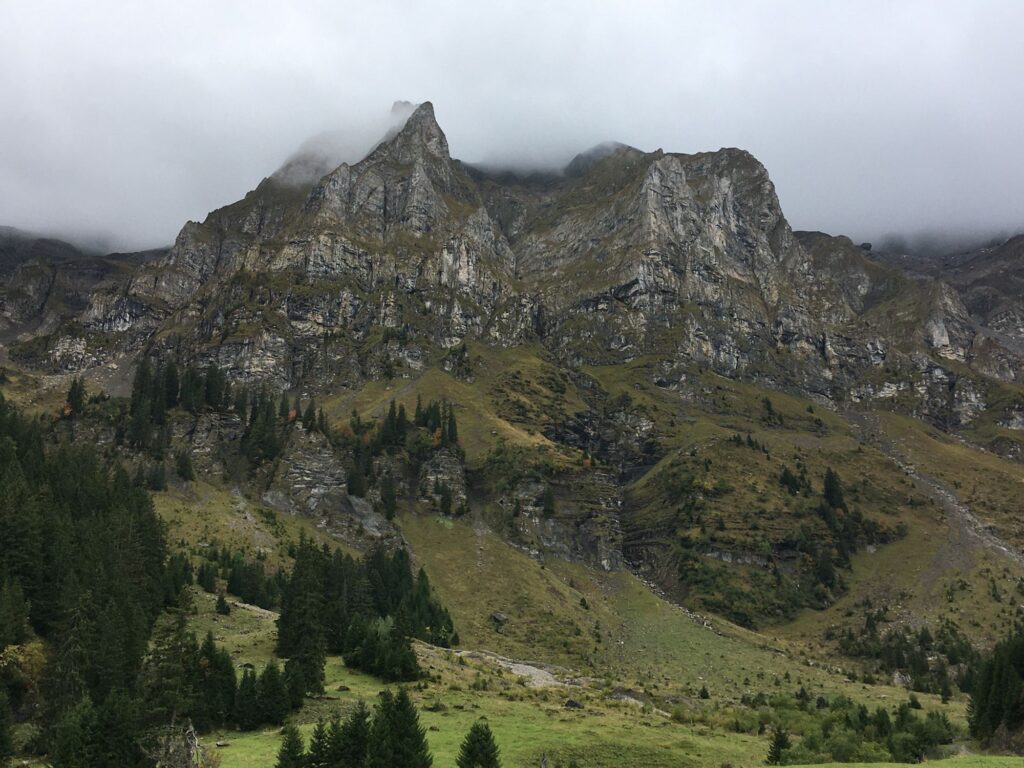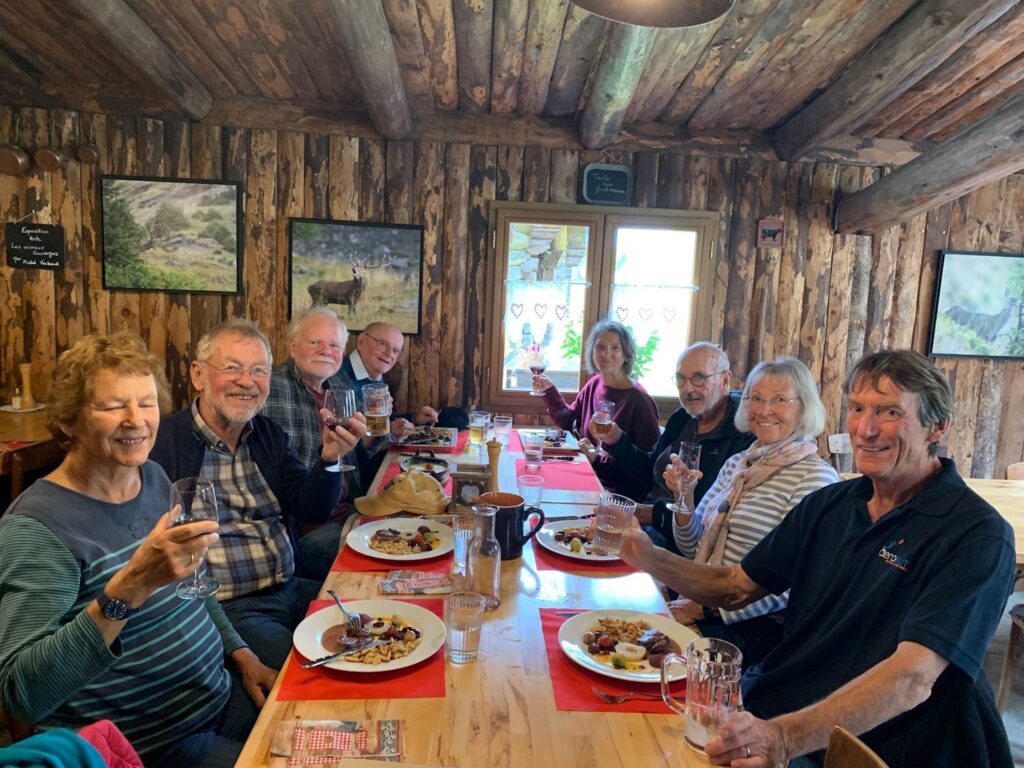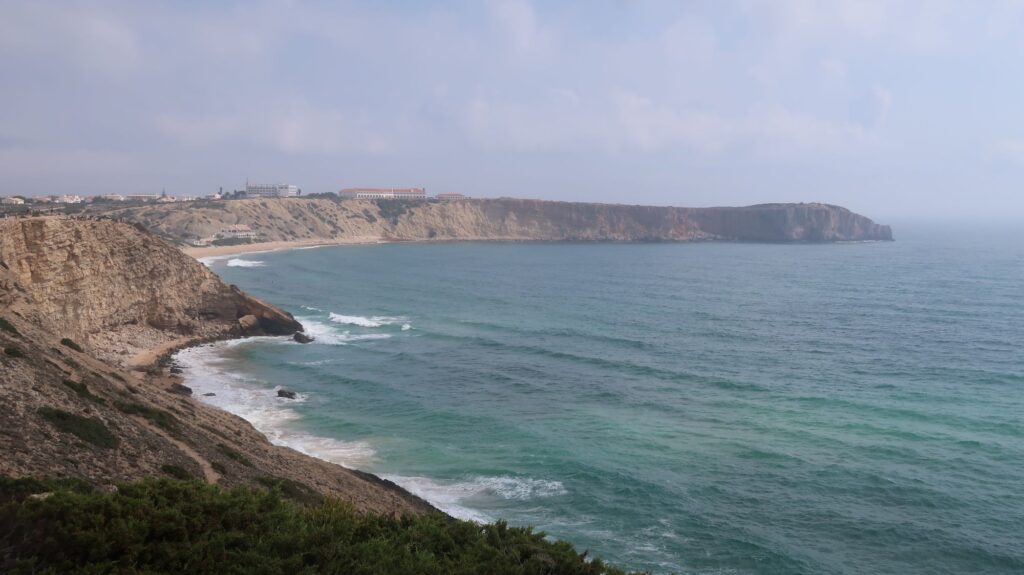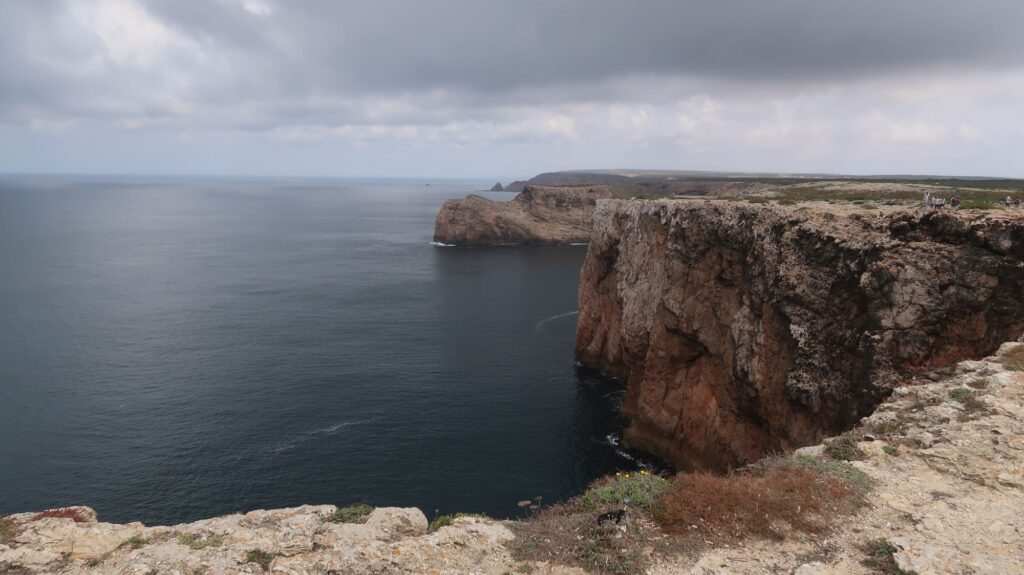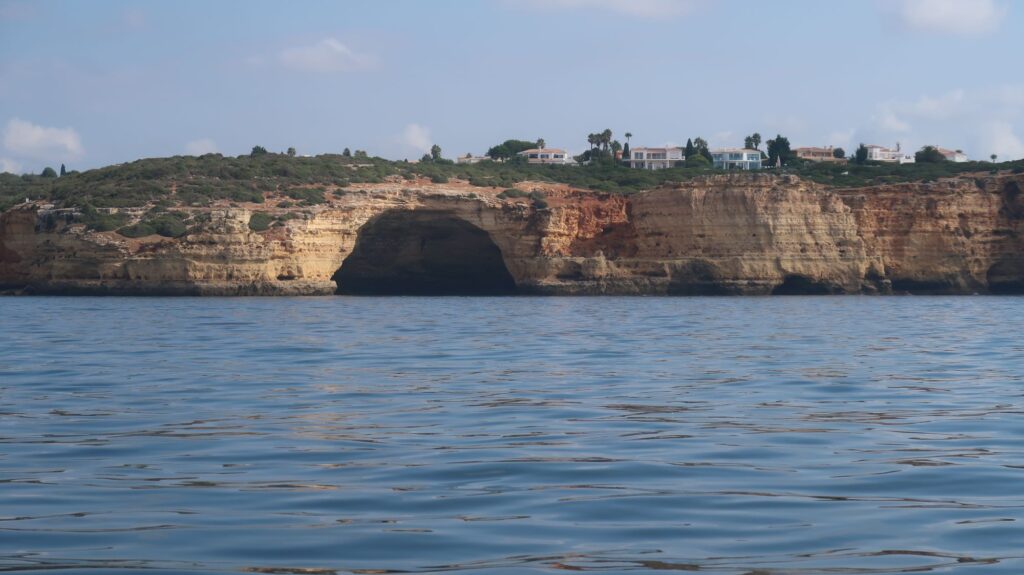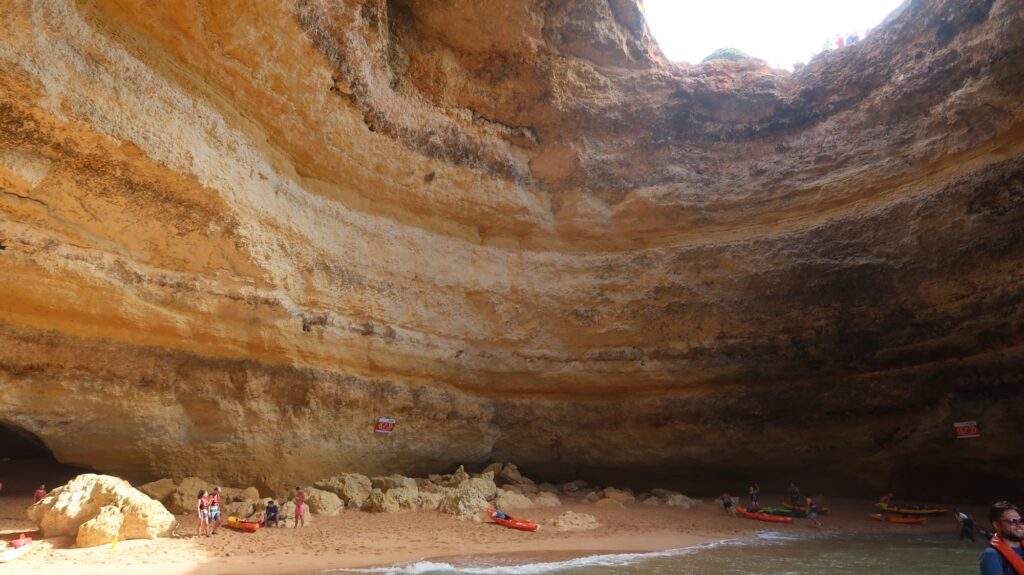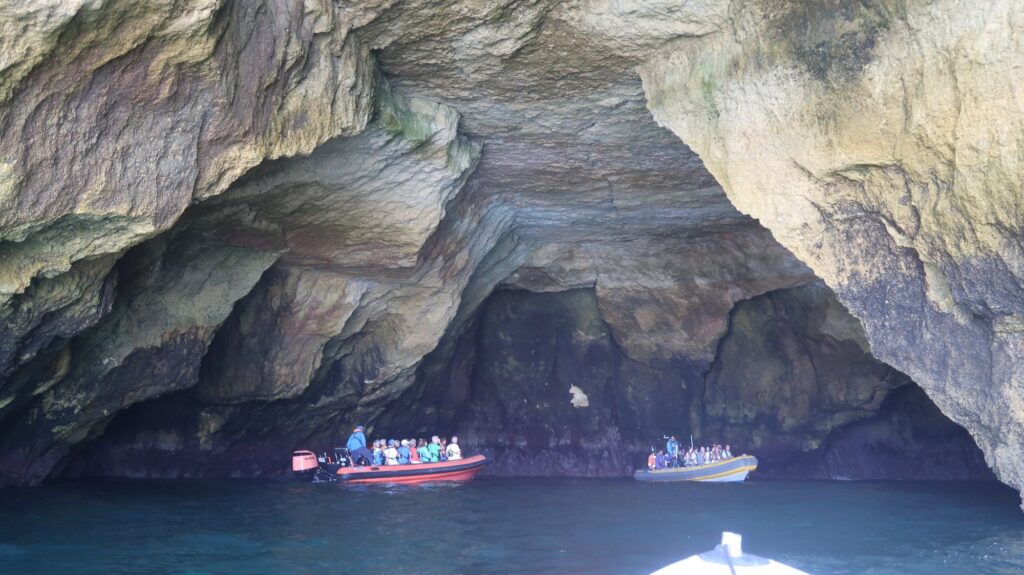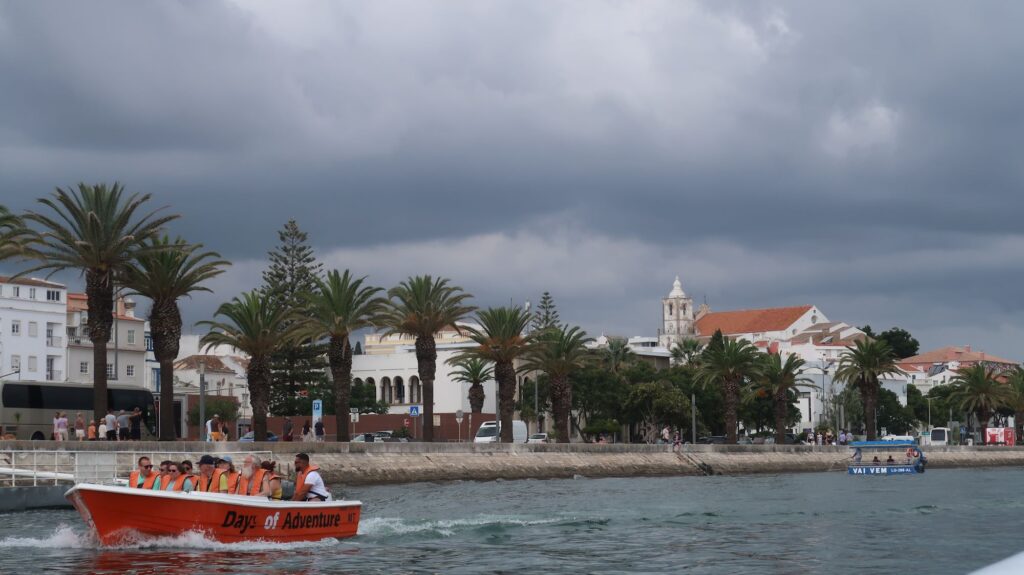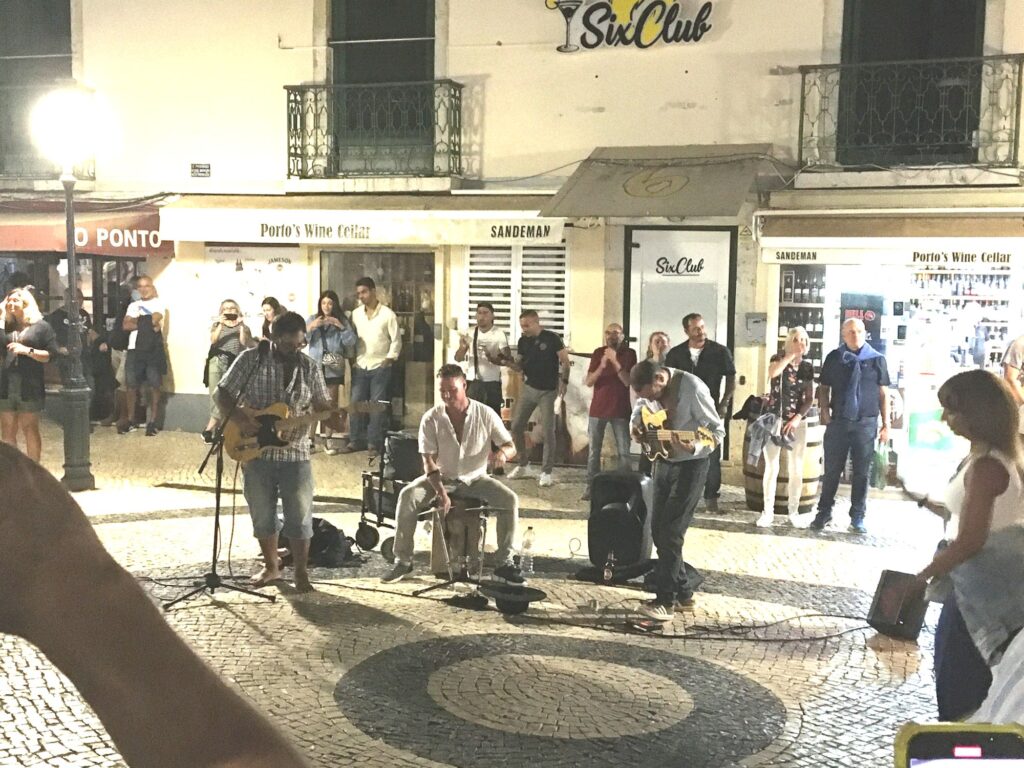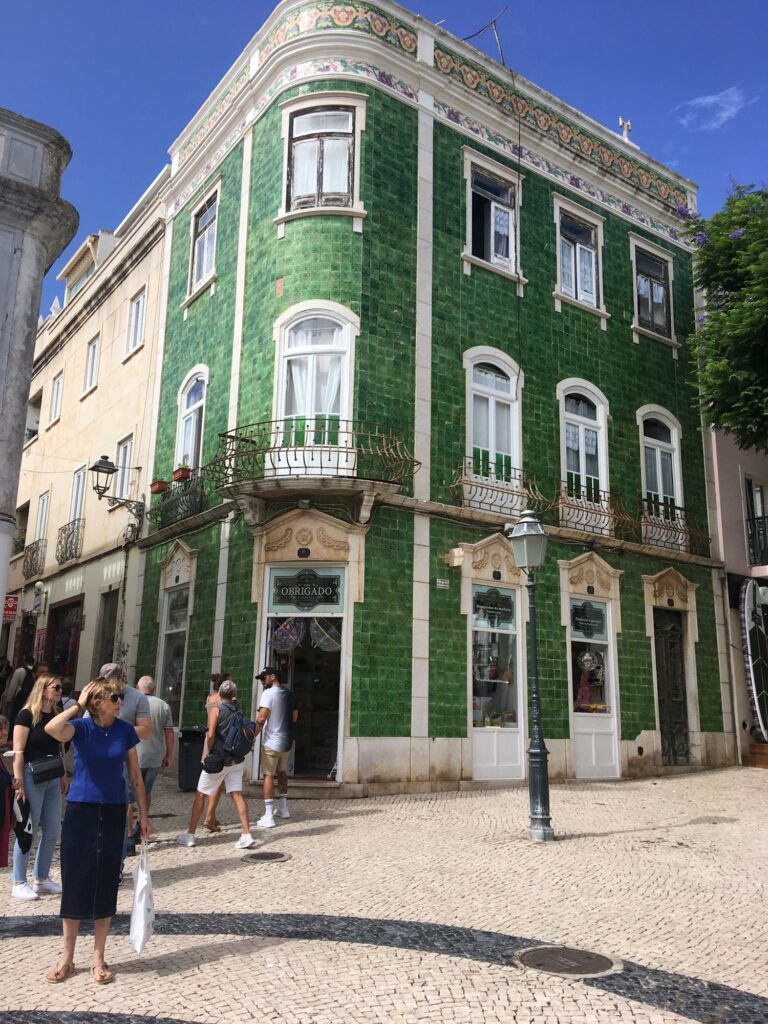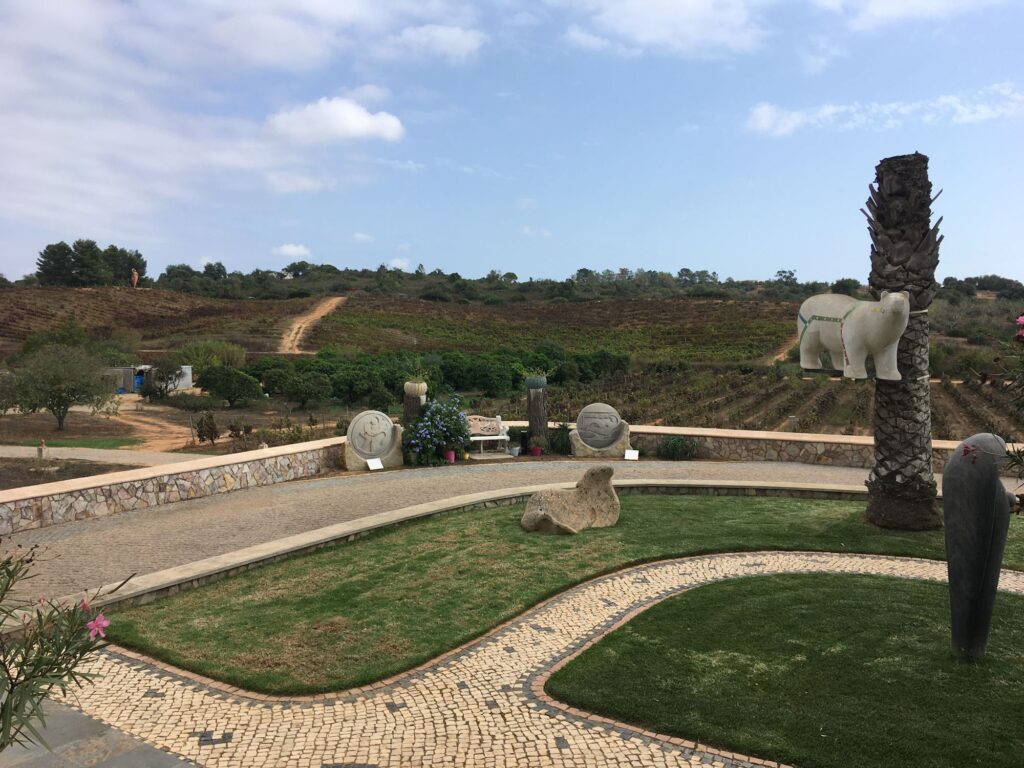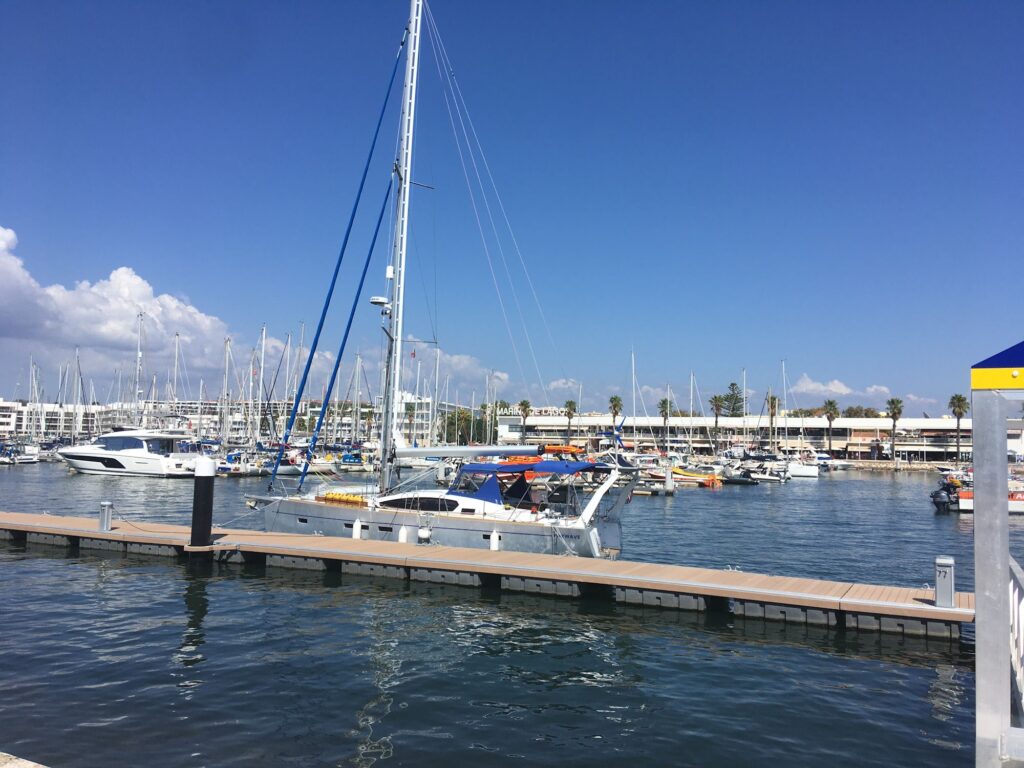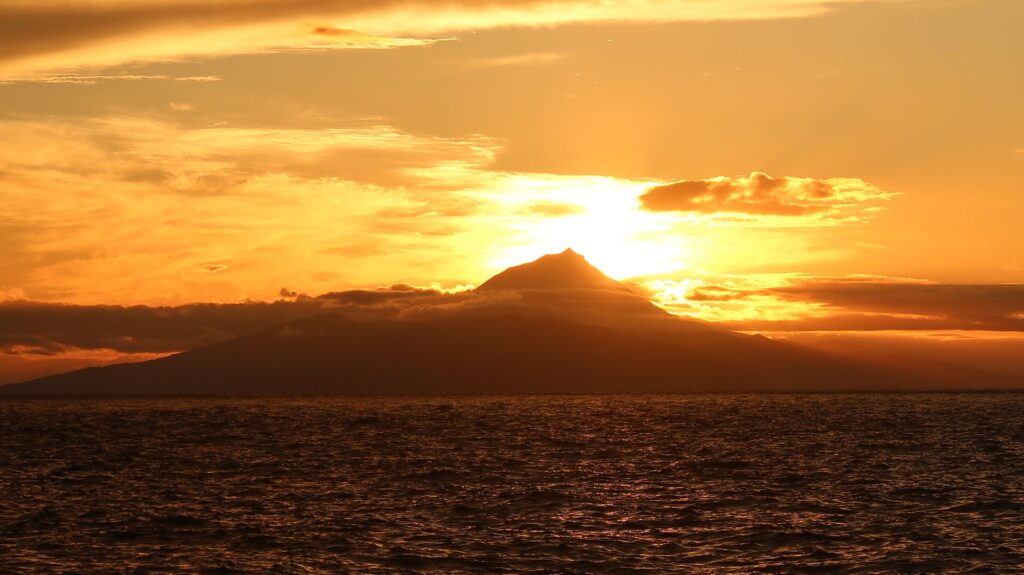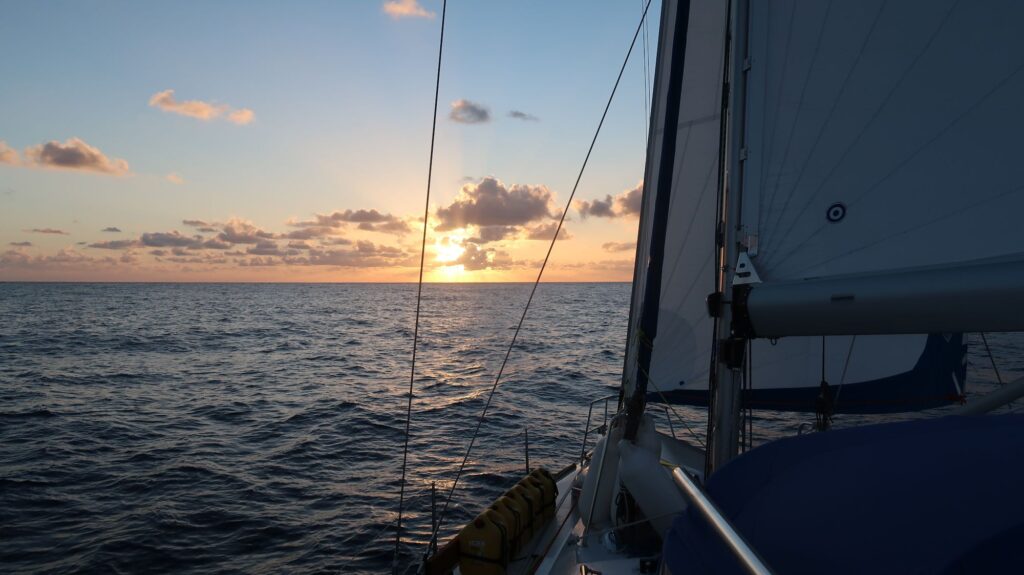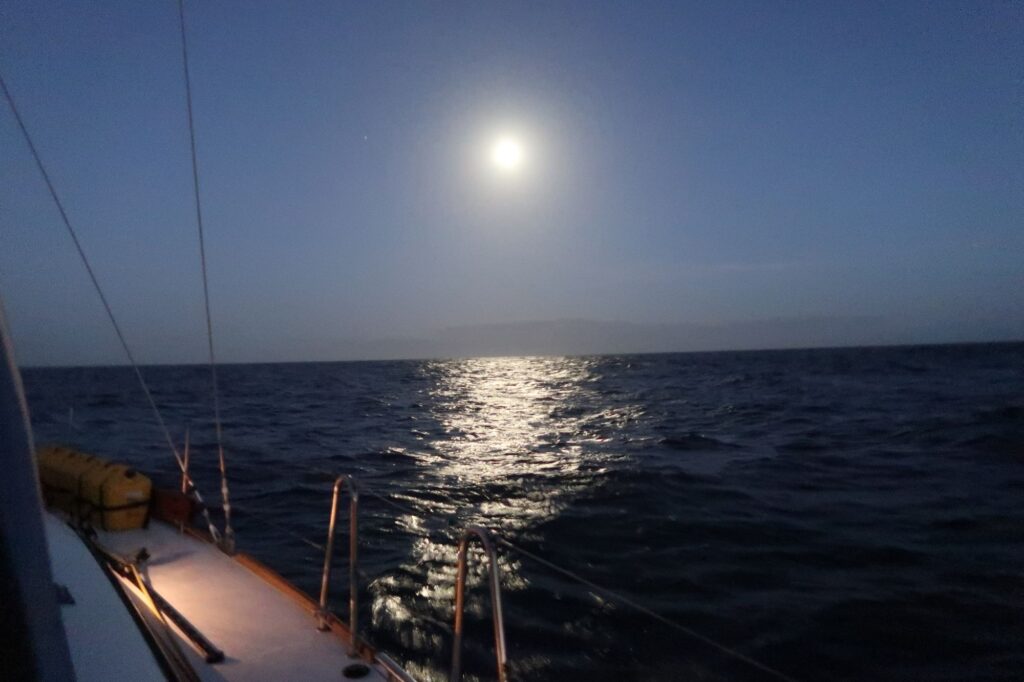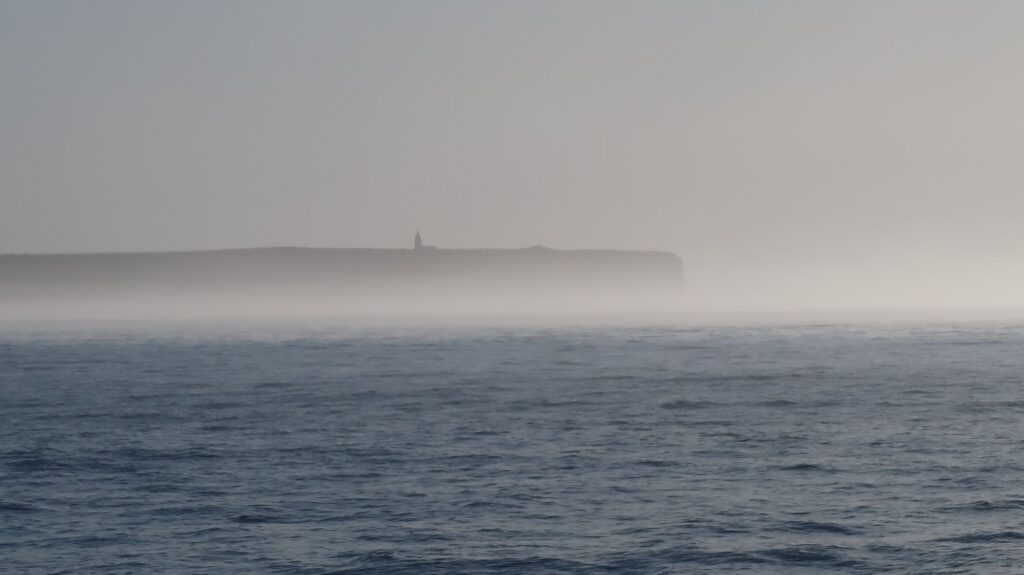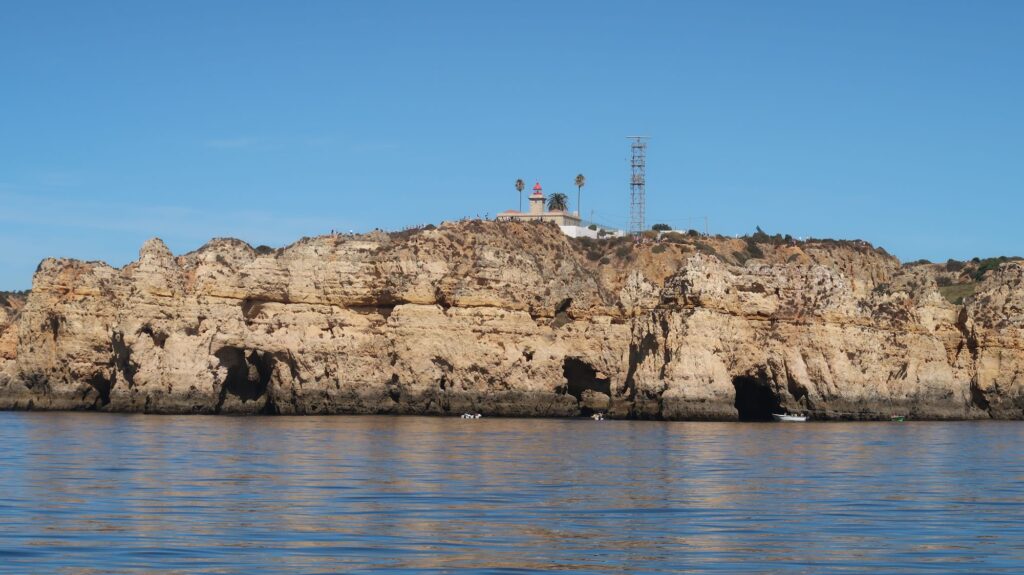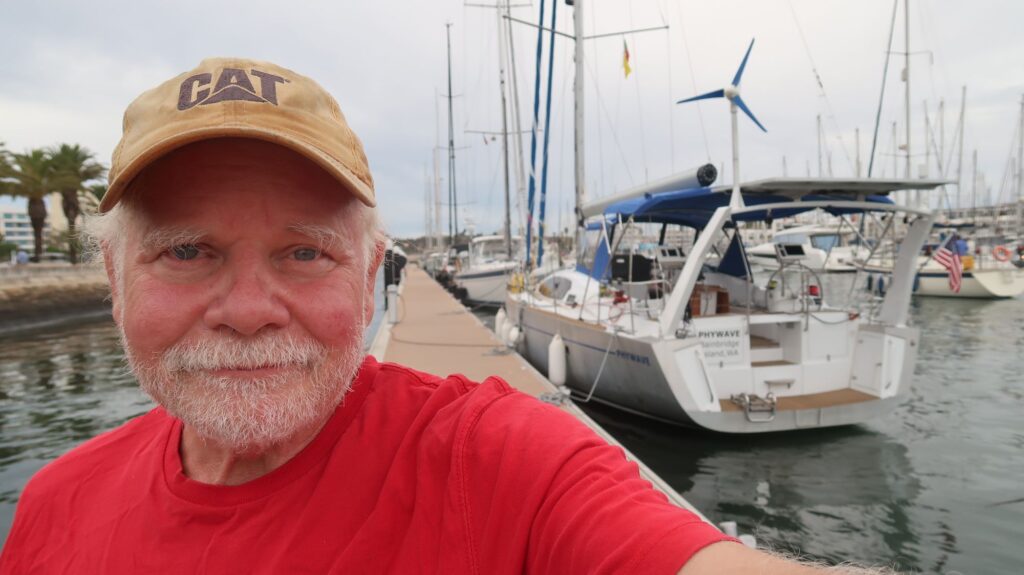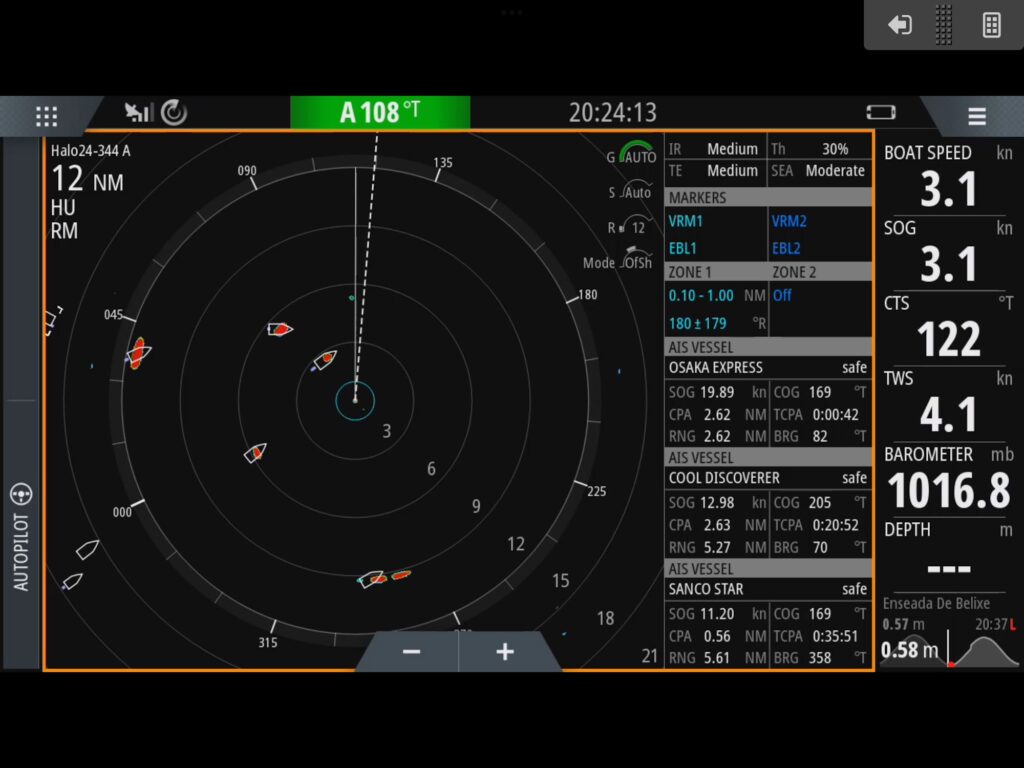November 4, 2022. From my last blog entry a while ago I decided to go west around the western shore of Santo Antao Island. It was a lucky move. Sailing maybe 10 miles offshore I was able to pick up a solid 3G data signal on my cellphone for a few hours. That let me catch up on email I don’t receive on the boat but also to download an important document that was too large to download on the low bandwidth Iridium satellite link on the boat. That document was the Waste Permit for my voyage to Antarctica issued by the US National Science Foundation (NSF).
The day before leaving Lagos I received the other important document I need to sail to Antarctica – a letter from the Environmental Protection Agency (EPA) approving my Initial Environmental Evaluation (IEE). The IEE is a detailed 25 page document that explains the purpose for the expedition, where I plan to go in Antarctica, what I plan to do at those locations, how I plan to protect the environment and wildlife, and how I am prepared to handle emergencies with the aim toward being completely self-sufficient. The Waste Permit application was similar except much shorter and focused on how I would handle waste produced by the expedition.
For both documents I had to explain in some detail my propsed use of a drone (UAV), both its operational use and how I would recover it, on both land and water, if something went wrong and it crashed. Recreational drone use is not allowed on the tourist ships visiting Antarctica (under IAATO rules) for good reasons. Imagine putting 100 tourists ashore on some penguin colony island and 20 of them want to launch drones – it would be total chaos! Especially when you consider that most would not be skilled drone pilots. So getting permission to use my drone in Antarctica for recreational is a rare thing that could only haporn with a private expedition, not an IAATO-sanctioned tour.
So I have all the approvals I need to take my boat to Antarctica as an expedition of one. Now it’s just a matter of sailing there – not so simple, but I’m finally sailing west and south – in the right direction.
Note that I had to submit the same documents and get the same approvals when I flew my plane to Antarctica in 2014. The EPA and NSF were accustomed to dealing with yachts visiting Antarctica so my flight was a first for them. Ultimately those documents were much simpler than for a yacht, but the experience on creating them, and getting them approved, gave me a format for what I needed to submit to sail there.
Turning south after passing Santo Antao I had some good downwind sailing for a few days. But as I crossed 10 degrees north latitude sailing south things changed dramatically. The Inter-Tropical Convergence Zone lies at these latitudes. The sky got gloomier, the wind shifted to the east, and in the middle of the night I was surrounded by thunderstorms. One storm eventually hit me, the wind speed rapidly rising above 30 kts with torrential rain and heavy waves. I scrambled to reduce sail, getting soaked in the process, then just hung on as the storm moved over and passed me. It came in so fast I was really not ready. I set my high wind alarm at 35 kts (gale force winds) – it was going off almost continously. Of course everything is more difficult and un-nerving when it’s a pitch black night.
Thst was the first of three other such episodes, though two occurred during daylight. I’ve also had heavy rain with little increase in wind. Curiously, my radar does not show much for thunderstorms, unlike the rain squalls, which it showed in detail, when I was crossing the Atlantic eastbound. The boat’s radar is designed to show things on, and just above, the water; i.e., at low elevation angles. Thunderstorms, being much higher, don’t register except when their rain is falling intensely.
I’m happy to say that as I sail farther south I believe I’m getting clear of these storm patterns. The southern sky this morining, November 4, is looking more promising and hopefully I’ll soon have some sunshine and steadier winds.
